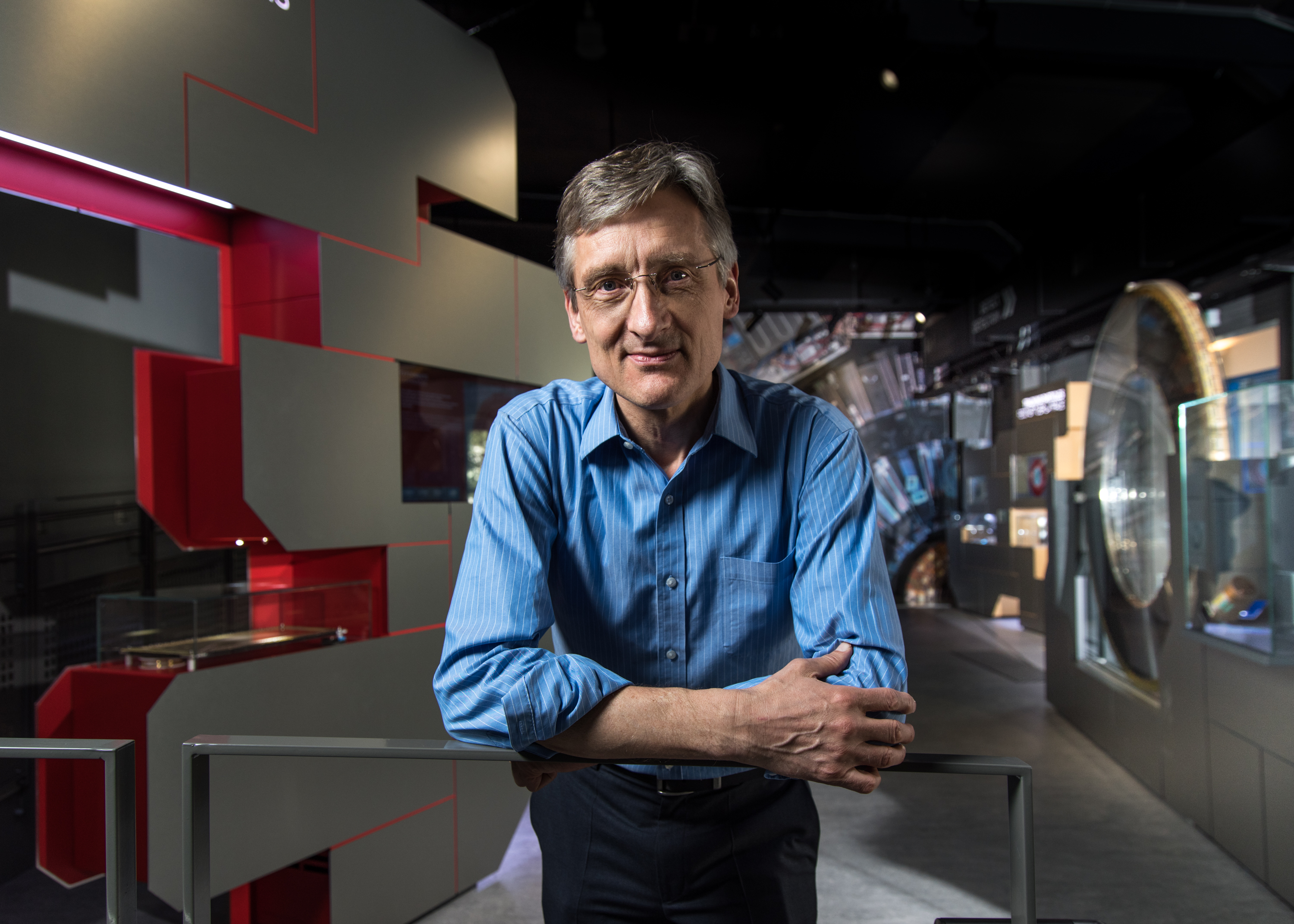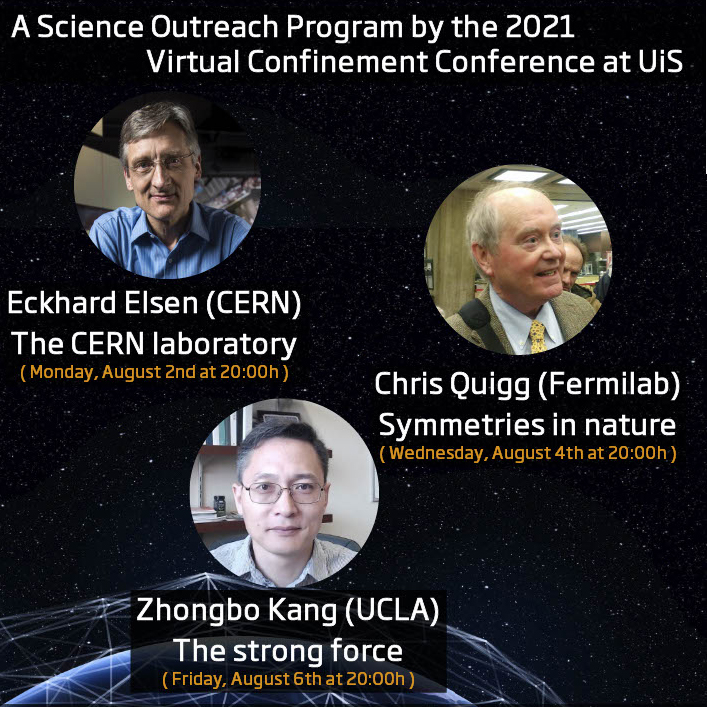Do you want to learn more about the smallest building blocks in nature? UiS have invited three world famous physicists to tell us in everyday language about the role particles play in nature and the strong forces binding them together.

This year the Department of Mathematics and Physics (IMF) is hosting an online international physics conference between August 2-6. At this conference, called A Virtual Tribute to Quark Confinement and the Hadron Spectrum, physicists from around the world will seek answers to basic questions in particle physics.
«As organizers and physicists we wish to connect with the general public and kindle their interest in the type of basic science that is at the center of this conference and which we work on here at UiS», says Alexander Rothkopf, Associate Professor in Physics at UiS.
«To take a first step, we have invited a trio of world leading physicists to tell us about particle physics in everyday plain English.»
Knowledge from CERN
The first speaker is Eckhard Elsen, director of research and computer simulations at the leading particle physics laboratory in Europe, the CERN laboratory in Switzerland.
«Norway has been part of CERN since its founding in 1953. In fact, Norway is contributing to the research at CERN with a significant amount of money each year. Many researchers in Norway are working with CERN, making Norway part of the success story of this laboratory. The talk from Eckhard Elsen is a great opportunity for the public to get to know what some of their tax money is spent on», says Alexander Rothkopf.
Elsen will give the audience a brief overview of the different research projects at CERN, and an idea of how they are all linked together.
«With many countries pulling together we can achieve something ground-breaking», Rothkopf says referring to the work conducted by researchers at CERN.
The CERN laboratory is famous for probing the properties of fundamental particles that make up everything around us, using the world's largest and most complex scientific instruments. One of their key achievements is the discovery of the Higgs boson, an elementary particle in the Standard Model of particle physics which gives mass to all the other particles.
Physicists leaving their bubble
«If you feel that you cannot follow these talks, we have failed. We want to leave the "research bubble" and offer something interesting to the public», Rothkopf states about the planned popular scientific talks. The goal is that everyone, who went to high school in Norway, no matter their background, and other education, should be able to follow the outreach program.
Since fundamental research is not immediately applicable in the form of products, it often takes decades before it has a direct impact to everyday life. When it does, it often leads to rapid progress, as was the case with the transistor, the laser or particle beam cancer therapy. Therefore, the organizers are keen to share with the general public what is going on in research in this field of science.
At the same time particle physics tries to answer some of the big questions of humankind, such as “how was the universe born” and “what are we made of”? Through the outreach program, the organizers hope to give the public insight into some of the answers physics can give to these questions.
Rothkopf says that the physicist speakers in the outreach programme are very enthusiastic about what they are doing.
«Mankind has made progress by looking more and more closely at nature. What is a molecule? What is going on inside of an atom? Is there something smaller than the core of an atom? These things are important to understand. Our conference sheds light on the smallest building blocks of nature from many different angles. Researchers throw their ideas at each other, discuss fiercely and go home with new impulses», he says.
From the lab to the public
Many of the experiments in fundamental physics involve particle accelerators.
«Developments in fundamental physics have a steady effect on everyday technology. Once you know how to build an accelerator for a complicated scenario, such as in high energy physics, you can also use the same technology in other fields. Nowadays you find accelerators used in hospitals to treat cancer patients. Particle physics technology also has made it into security at ports, where you can use particle accelerators to screen containers for explosives without opening them. And you can even use this technology to look inside active volcanos or pyramids», Rothkopf says, listing quite unexpected applications for particle physics.

Eckhard Elsen is the first speaker in the outreach programme on August 2nd 20:00h, followed by Chris Quigg on August 4th 20:00h and Zhongbo Kang on August 6th 20:00h.
Chris Quigg will take you on a tour to the smallest building blocks of matter where we find that, surprisingly, these particles are behaving in a relatively simple fashion, compared to the complex patterns we find in the world around us every day. The key to this simplicity of the microscopic world lies in a concept called symmetry. Chris Quigg’s presentation give you a glimpse of the fascinating concept of symmetries, and will show how it has shaped our understanding of the microscopic world in the 20th century.
Zhongbo Kang has a message: The strong force is with us! In his presentation he will show how in the 20th century physicists began to understand that there exists a force in the universe that holds together the cores of atoms and by that makes the world possible as we know it.